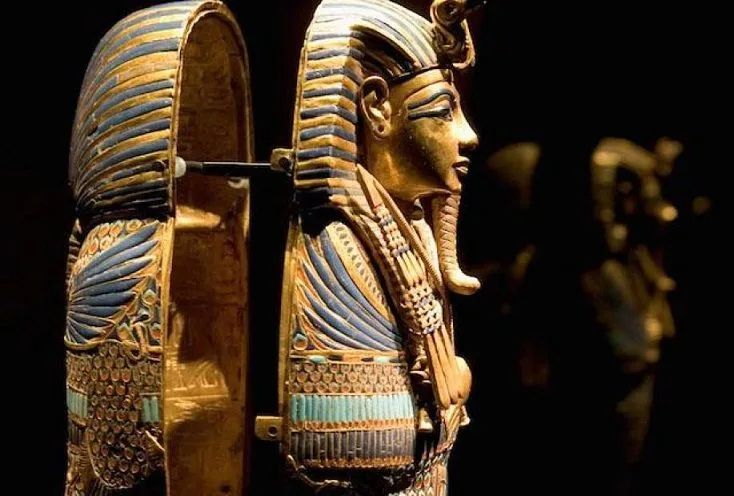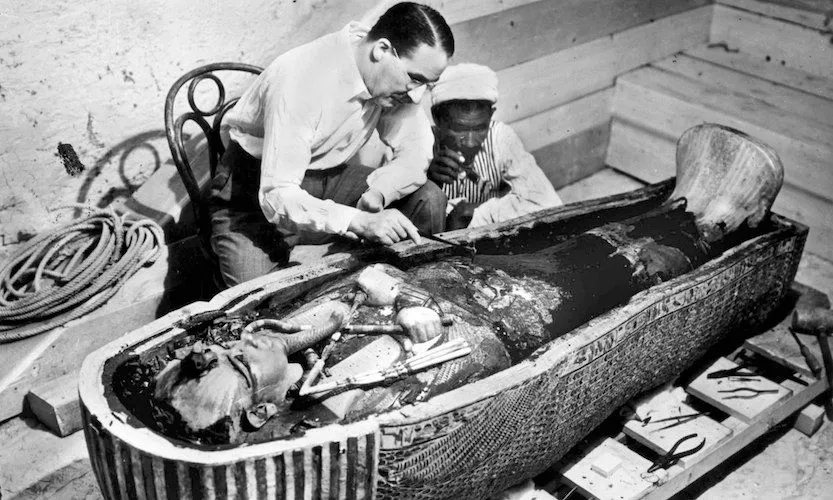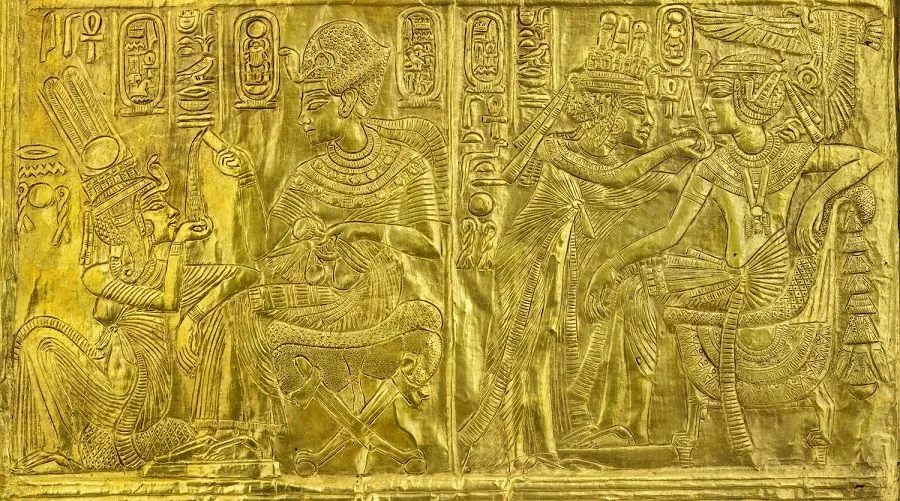
Certainly, we have all heard of the story of the Pharaoh child, Tutankhamun. His tomb was found by the British explorer Howard Carter in 1922, and since that time historians haven't spoken of anything else. But why? What is the fascination of this tomb? What is the fascination of the child? Read the rest of the article and you will know!

Historical Moment
The discovery of the tomb in 1922 was considered one of the most important archaeological discoveries of all time because the child was crowned with only 9 years of age, and his kingdom lasted between 1332 and 1323 BC, that is, 11 years of reign.
At the age of 19 the young man was murdered, and thousands of years later his tomb was discovered in the early twentieth century, for the story of Tutankhamun had been completely forgotten.
At the time, all the explorers believed that all the graves had been found, so imagine the surprise that was!

The Discovery of the Century
At the age of 17, Howard Carter decided to start exploring the sands of Egypt, in 1891. He was working in several excavations along with Beni Hassan, Deir el Babri, Edfu and even Abu Simbel, and he was convinced that he still had to find a death chamber.
In 1907, Carter was then contacted by a British man named Lord Carnarvon, who had a very high-income source and, as he was fascinated by Egyptology, he decided to finance the Carterproject, then starting an excavation. It was in 1914 that Carter obtained a license to excavate in an area where he believed King Tut was found, yet his work had to be stopped because of World War I.

After 1918, the excavations were resumed, but Carnarvon became impatient for Carter's lack of results and decided to cut off the funding of the exhibits. But on November 4, 1922, a young man who worked to bring water to the excavation, decided to dig a hole in the sand with a stick and found a buried step. Luckily, this step led to a sealed door, and to a secret chamber.
Carter and Carnarvon entered the Chamber together on November 26 and found a huge collection of artifacts and treasures, and on February 16, 1923, Carter opened the burial chamber and then found the Tutankhamun sarcophagus.
This discovery was so important that it allowed certain archaeologists to uncover innumerable mysteries about the life and death of the King. However ... history didn't stop here. The sinister part came next ...

The Curse of Tutankhamun
You may have heard of this curse in some documentaries on the History Channel, but I decided to bring a summary to those who are still unaware.
After the discovery of the tomb, the news spread all over the world, covering various newspapers internationally. However, it was not long before rumors began about a possible curse that was associated with the excavation site.
Legend has it that anyone who disturbed the rest of the Egyptian pharaohs would suffer the consequences, and some historians believed that Carter would have encouraged the rumor to keep the press away from the excavations. But is it really that the curse was fake?

Well ... on April 5, 1923, Lord Carnarvon died suddenly, after a few days the tomb had been disarmed. If the idea of the curse had already traveled the world, at that time it was still more nourished. The cause of the Lord's death was a mosquito bite, after he had cut himself while shaving, dying of a generalized infection. The rumors went even further, and locals even claimed that at the time of his death, there was a blackout in Cairo. In addition, his dog also died on the same day in England.
The second victim was an American millionaire named Geroge Jay Gould I, who died in May 1923, after visiting Tutankhamun's tomb, and developing pneumonia. The third victim, through rumors, Douglas Reid, the radiologist who took X-rays of the king's mummy, also died shortly thereafter, after contact with the pharaoh. The fourth victim turned out to be a member of Carter's excavation team, who died of arsenic poisoning.
Jokes aside, Carter's canary was swallowed by a snake the day the tomb was opened.

Reality Vs. Imagination
All these tragic deaths occurred after the opening of the tomb of Tutankhamun, and the truth is that of the 48 people who were present at the opening of the chamber, eight died in the next 12 years.
Carter himself admitted that he had excavated, uncovered, cataloged, and cleaned up everything on the site, including taking the mummy out of the sarcophagus with his bare hands, and went to die 16 years later, a cancer victim. Richard Adamson, who also belonged to the excavation team, and was responsible for storing the tomb for seven years, only died 60 years after the discovery.
About the blackout, the truth is that at the time, in the 1920's in Egypt, the blackouts were constant, and even the dog didn't die the instant the Lord Carnarvon; and relative to the history of the canary, in reality he didn't die for any snake, but was a gift from the archaeologist to a friend, so he ran out of canaries.

All these are just theories, and the truth is that many of them may even have been caused by the presence of fungi, such as Aspergillus niger, A. flavus and A. ochraceus, which may have remained in the funerary chamber and proliferated in the artifacts during thousands of years. These organisms are considered dangerous for people with low immunity.
These bacteria were found mostly in bats, which existed in the hills at Tutankhamun. And according to the researchers, they still bring another plot twist: in fact the graves don't bring warning messages to the invaders. Here's the conclusion: No, the grave was not cursed, but full of deadly microorganisms.

Goodies for Newbies
